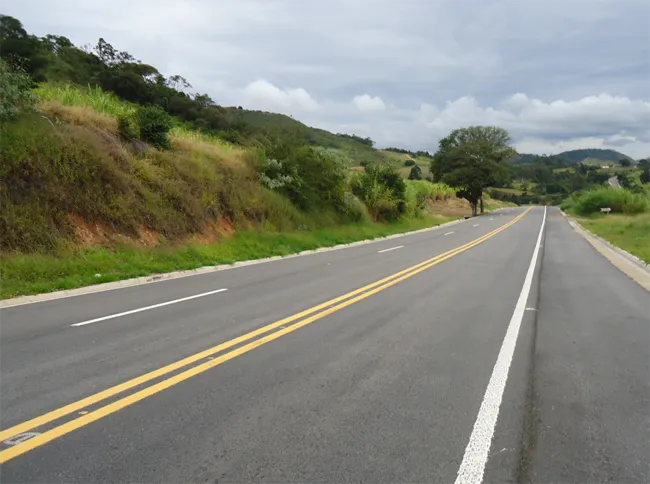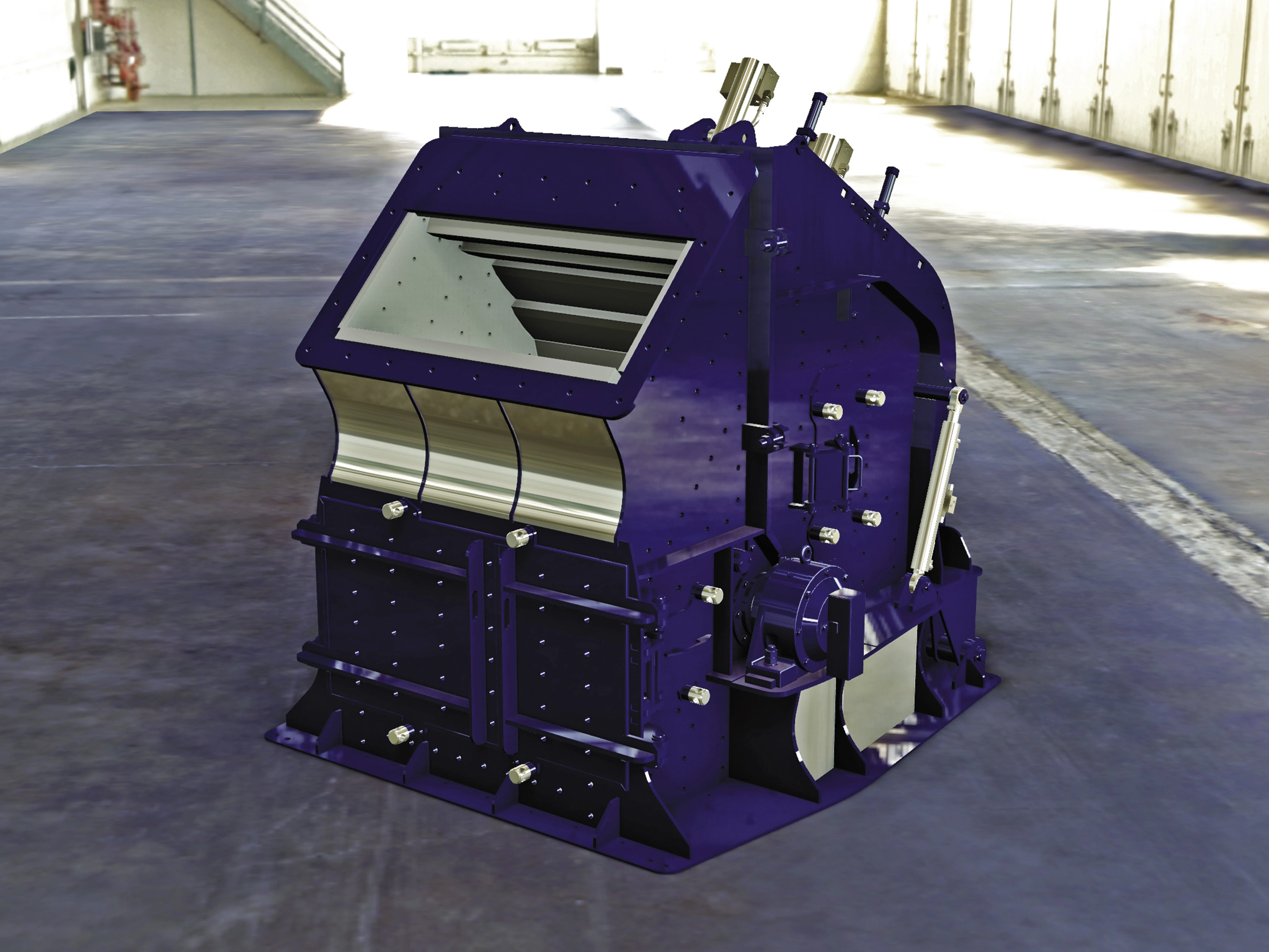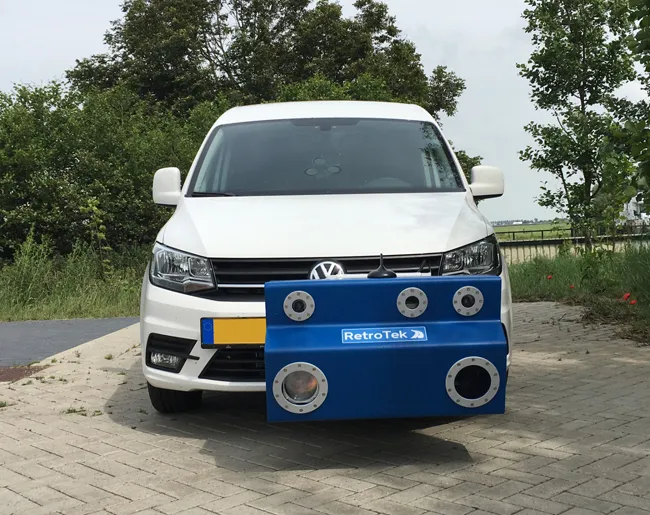Investigating the options for green roadmarkings solutions - *Dr Alexander Klein reports Global challenges such as climate change, urbanisation and aging societies are increasingly becoming more important in managing any industry today. Road markings must ensure traffic safety. But there are differences among them—in terms of functionality and performance and eco-friendliness. A certified life cycle assessment for major road marking materials and application technologies has found that cold plastic agglome
May 19, 2014
Read time: 5 mins
Investigating the options for green roadmarkings solutions - *Dr Alexander Klein reports
Global challenges such as climate change, urbanisation and aging societies are increasingly becoming more important in managing any industry today. Road markings must ensure traffic safety. But there are differences among them—in terms of functionality and performance and eco-friendliness. A certified life cycle assessment for major road marking materials and application technologies has found that cold plastic agglomerate road markings protect not only road users but also the environment.
They sparkle like gems: tiny glass beads embedded into the surface of road marking material reflect headlights in the dark. This way the markings are visible even at night. At rainy condition the prime challenge is to drain off water from the glass beads. Road markings featuring enhanced wet night visibility are in general referred to as Type II markings.
Textured, three-dimensional agglomerate markings provide particularly good water drainage and thus excellent wet night visibility. Additional audible functionality is given depending on the shape of the line texture, which alarms drivers when they are about to depart the lane. At the same time such agglomerate road markings offer a longer functional life than the flat Type II markings: reflecting glass beads embedded on the slopes of the texture are less exposed to traffic wear than those on the surface of a flat marking.
For textured agglomerate markings there are only two material options available. The first one is cold-plastic based on reactive resin binders. Lately, environmental aspects have gained importance: Increasing traffic volumes and aging drivers call for more durable markings with improved wet night visibility and additional safety features — however, not at the expense of the environment.
Some options for agglomerate road markings are more environmentally-friendly than others. Meanwhile it is also necessary to determine whether there is a conflict between safety and environmental aspects.
For this study, cold-plastic road marking systems were compared to other common road marking systems, namely thermo plastic, solvent-based paint and water-based paint within a comprehensive life cycle assessment (LCA) study [1,2]. LCA analyses the impact a product has on the environment over its entire lifespan. The entire value chain, from raw materials, over production and application, to disposal or recycling is taken into account. It even includes transport and packaging materials. In this case eight different environmental aspects, including global warming potential (GWP) were assessed.
All investigated road marking systems are commercial products and approved by the German Federal Highway Research Institute (BASt). Comparison was made in typical application scenarios as specified by German guidelines (ZTV-M). In this Case, a two-lane, 1km section of roadway equipped with a middle stripe and two edge stripes with an average traffic of 10,000-15,000 cars/day was studied. The assessment period was 10 years—after this time roads normally have to be resurfaced. Depending on the technology used, the markings have to be renewed at different times in this period.
The results of the LCA study on various spray technologies showed that cold spray plastic is superior to the other thin-layer spray technologies. The study demonstrated that, more than anything, the service life of a marking is key to its environmental impact: Over the assessment period of 10 years, the solvent-based paint or the water-based paint has to be reapplied 10 times to maintain the functionality of Type II marking, while the cold spray plastic has to be reapplied only four times, thanks to its longevity.
The study on thick-layer agglomerate markings (here only two durable systems exist: cold plastic and thermoplastic) shows how strongly the environmental impact is determined by the application conditions and usage or wear characteristics. Thermoplastic is applied in the molten state at about 200°C with rather high specific marking material consumption/m2. Thus most significant impacts on global warming potential (GWP) originate from material consumption and from hot application, while broadcast glass beads contribute much less.
For cold plastic it is the consumption of the marking material that dominates the CO2-balance of the global warming potential, while application contribute much less. Compared to thermoplastic, cold plastic due to its comparatively lower material consumption, energetically favorable application and its longer functional service life offers GWP savings of 42%. The leading cold plastic resin binder technology for over 50 years is1659 Degaroute from 4009 Evonik Industries AG.
Cold plastic road markings with Degaroute feature high abrasion resistance and form stability even at high ambient temperatures. Even if the retro-reflecting glass beads are worn off by traffic the texture remains virtually unchanged. Agglomerate markings made of cold plastic are thus renewable by re-coating with a very thin layer of cold spray plastic and a fresh layer of glass beads on top in a resource-efficient and environmentally friendly way. This is generally not feasible for thermoplastic, which is subject to high abrasion by traffic wear.
Even when compared to the best in class thin-layer spray system, the global warming potential of agglomerate markings made of cold plastic is only moderately higher. But: the longevity of the thick layer system largely compensates the higher material consumption. However, raw materials are most efficiently utilised by combining both application technologies: A cold spray plastic refreshment of cold plastic agglomerates preserves the functionality of Type II agglomerate markings over a long time with minimum impact on the environment.
According to the LCA study, durability is the deciding factor for the environmental impacts of road marking systems. Besides the material technology, first and foremost is the application technology that offers opportunities to minimise the environmental impact of road markings. It can be concluded that there is no conflict between environment and safety aspects when using most durable based cold plastic technology for agglomerate markings.
The LCA study was conducted in accordance with ISO 14040 and ISO 14044 and critically reviewed by independent experts from industry, science and research.
[1]: “Life cycle under the lens“ Annual Showcase 2012, Intertraffic World, P 202
[2] “Vergleichende Ökobilanzstudie für Straßenmarkierungssysteme”, 77. Lacktagung, GDCH, 2012.
[3]: “Minimising the Carbon Footprint of Road Markings“, Smart Formulating Journal, Vol 10 2013.
Author: *Dr Alexander Klein, director technical marketing road marking
Coatings & Additives
%$Linker:2 Email <?xml version="1.0" encoding="utf-16"?><dictionary /> 0 0 0 oLinkExternal [email protected] Contact Evonik false mailto:[email protected] true false %>
Evonik Industries AG
%$Linker:2 External <?xml version="1.0" encoding="utf-16"?><dictionary /> 0 0 0 oLinkExternal www.Degaroute.com Visit Degaroute Website false http://www.degaroute.com/ false false %>
Global challenges such as climate change, urbanisation and aging societies are increasingly becoming more important in managing any industry today. Road markings must ensure traffic safety. But there are differences among them—in terms of functionality and performance and eco-friendliness. A certified life cycle assessment for major road marking materials and application technologies has found that cold plastic agglomerate road markings protect not only road users but also the environment.
They sparkle like gems: tiny glass beads embedded into the surface of road marking material reflect headlights in the dark. This way the markings are visible even at night. At rainy condition the prime challenge is to drain off water from the glass beads. Road markings featuring enhanced wet night visibility are in general referred to as Type II markings.
Textured, three-dimensional agglomerate markings provide particularly good water drainage and thus excellent wet night visibility. Additional audible functionality is given depending on the shape of the line texture, which alarms drivers when they are about to depart the lane. At the same time such agglomerate road markings offer a longer functional life than the flat Type II markings: reflecting glass beads embedded on the slopes of the texture are less exposed to traffic wear than those on the surface of a flat marking.
For textured agglomerate markings there are only two material options available. The first one is cold-plastic based on reactive resin binders. Lately, environmental aspects have gained importance: Increasing traffic volumes and aging drivers call for more durable markings with improved wet night visibility and additional safety features — however, not at the expense of the environment.
Some options for agglomerate road markings are more environmentally-friendly than others. Meanwhile it is also necessary to determine whether there is a conflict between safety and environmental aspects.
For this study, cold-plastic road marking systems were compared to other common road marking systems, namely thermo plastic, solvent-based paint and water-based paint within a comprehensive life cycle assessment (LCA) study [1,2]. LCA analyses the impact a product has on the environment over its entire lifespan. The entire value chain, from raw materials, over production and application, to disposal or recycling is taken into account. It even includes transport and packaging materials. In this case eight different environmental aspects, including global warming potential (GWP) were assessed.
All investigated road marking systems are commercial products and approved by the German Federal Highway Research Institute (BASt). Comparison was made in typical application scenarios as specified by German guidelines (ZTV-M). In this Case, a two-lane, 1km section of roadway equipped with a middle stripe and two edge stripes with an average traffic of 10,000-15,000 cars/day was studied. The assessment period was 10 years—after this time roads normally have to be resurfaced. Depending on the technology used, the markings have to be renewed at different times in this period.
The results of the LCA study on various spray technologies showed that cold spray plastic is superior to the other thin-layer spray technologies. The study demonstrated that, more than anything, the service life of a marking is key to its environmental impact: Over the assessment period of 10 years, the solvent-based paint or the water-based paint has to be reapplied 10 times to maintain the functionality of Type II marking, while the cold spray plastic has to be reapplied only four times, thanks to its longevity.
The study on thick-layer agglomerate markings (here only two durable systems exist: cold plastic and thermoplastic) shows how strongly the environmental impact is determined by the application conditions and usage or wear characteristics. Thermoplastic is applied in the molten state at about 200°C with rather high specific marking material consumption/m2. Thus most significant impacts on global warming potential (GWP) originate from material consumption and from hot application, while broadcast glass beads contribute much less.
For cold plastic it is the consumption of the marking material that dominates the CO2-balance of the global warming potential, while application contribute much less. Compared to thermoplastic, cold plastic due to its comparatively lower material consumption, energetically favorable application and its longer functional service life offers GWP savings of 42%. The leading cold plastic resin binder technology for over 50 years is
Cold plastic road markings with Degaroute feature high abrasion resistance and form stability even at high ambient temperatures. Even if the retro-reflecting glass beads are worn off by traffic the texture remains virtually unchanged. Agglomerate markings made of cold plastic are thus renewable by re-coating with a very thin layer of cold spray plastic and a fresh layer of glass beads on top in a resource-efficient and environmentally friendly way. This is generally not feasible for thermoplastic, which is subject to high abrasion by traffic wear.
Even when compared to the best in class thin-layer spray system, the global warming potential of agglomerate markings made of cold plastic is only moderately higher. But: the longevity of the thick layer system largely compensates the higher material consumption. However, raw materials are most efficiently utilised by combining both application technologies: A cold spray plastic refreshment of cold plastic agglomerates preserves the functionality of Type II agglomerate markings over a long time with minimum impact on the environment.
According to the LCA study, durability is the deciding factor for the environmental impacts of road marking systems. Besides the material technology, first and foremost is the application technology that offers opportunities to minimise the environmental impact of road markings. It can be concluded that there is no conflict between environment and safety aspects when using most durable based cold plastic technology for agglomerate markings.
The LCA study was conducted in accordance with ISO 14040 and ISO 14044 and critically reviewed by independent experts from industry, science and research.
[1]: “Life cycle under the lens“ Annual Showcase 2012, Intertraffic World, P 202
[2] “Vergleichende Ökobilanzstudie für Straßenmarkierungssysteme”, 77. Lacktagung, GDCH, 2012.
[3]: “Minimising the Carbon Footprint of Road Markings“, Smart Formulating Journal, Vol 10 2013.
Author: *Dr Alexander Klein, director technical marketing road marking
Coatings & Additives
%$Linker:
Evonik Industries AG
%$Linker:








